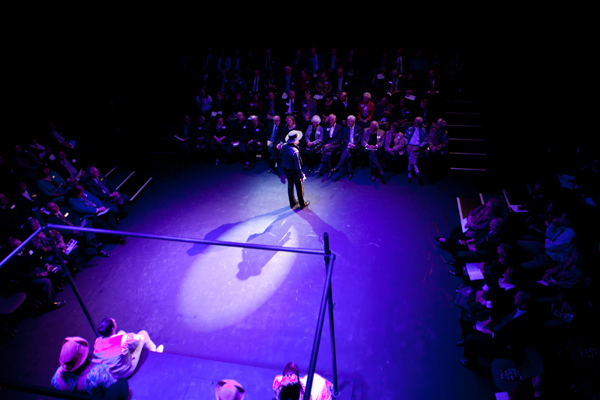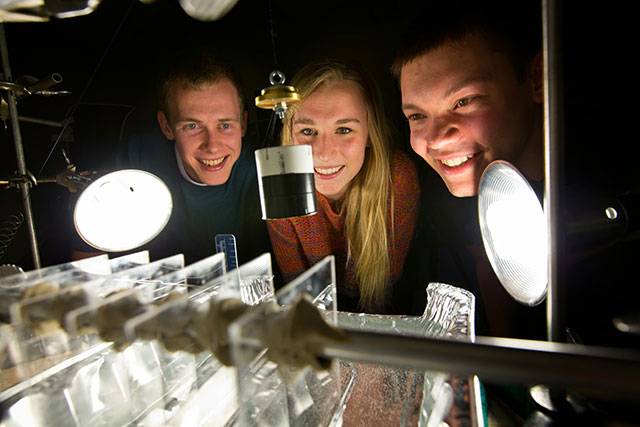Page 84 • (1,154 results in 0.058 seconds)
-
Areas of Consideration When selecting a study away program, it is important to evaluate your options from several angles.
out of your study away experience? What sort of housing would you prefer? Such as residential halls, apartments, homestays, etc. Would you like to study in a rural environment? Urban environment? Do you want to go with a group of other PLU students? Would you like to be more independent? Would you thrive in a more structured environment with plenty of cultural activities and study tours/excursions, or a more independent environment where you have lots of flexibility and free time? Would you do
-
Raphael Lemkin’s dedication to the punishment and prevention of genocide, primarily through international legal intervention, was founded on a belief in the fundamental rights of all peoples.
not destroyed was to be integrated in the German cultural, political, and economic pattern.”14 Lemkin’s point was that “German cultural, political, and economic patterns,” as defined by Nazi leadership, were supposed to be mutually exclusive with the lives of anyone Jewish: meaning could only exist within German (or rather, Nazi) ideology. Even those whom Nazis did not mean to murder needed to conform to Nazism—the question was merely whether Nazi officials consigned a person, through that
-
Raphael Lemkin’s dedication to the punishment and prevention of genocide, primarily through international legal intervention, was founded on a belief in the fundamental rights of all peoples.
not destroyed was to be integrated in the German cultural, political, and economic pattern.”14 Lemkin’s point was that “German cultural, political, and economic patterns,” as defined by Nazi leadership, were supposed to be mutually exclusive with the lives of anyone Jewish: meaning could only exist within German (or rather, Nazi) ideology. Even those whom Nazis did not mean to murder needed to conform to Nazism—the question was merely whether Nazi officials consigned a person, through that
-
Major in Psychology 42 semester hours, including: PSYC 101, 242, 499 One of PSYC 310, 315, 320, or 330 Two of PSYC 440, 442, 448, or 481 At least 2 semester hours from PSYC 495, 496, or 497 12
adulthood to death. Prerequisite: PSYC 101. (4) PSYC 330 : Social Psychology The study of how an individual's thoughts and behaviors are influenced by the presence of others. Research and theory concerning topics such as person perception, attitudes, group processes, prejudice, aggression, and helping behaviors are discussed. Prerequisite: PSYC 101. (4) PSYC 335 : Cultural Psychology - GE The study of the relation between culture and human behavior. Topics include cognition, language, intelligence
-

Campaign ends, surpasses goal by $22 million A performance in the Studio Theater in Eastvold Hall, which was recently renamed the Karen Hille Phillips Center for the Performing Arts. By Greg Brewis The university’s most recent fundraising campaign was launched amid buoyant economic times, in…
sustaining the quality of academic programs, co-curricular activities and the full array of other operations on campus. A number of special academic projects were also made possible with campaign support. They include $800,000 in foundation support for a new School of Nursing outreach program in geriatric care. And campaign support provided for activities outside the classroom. Co-curricular support included gifts for Campus Ministry, the Scandinavian Cultural Center and MediaLab. Read Previous
-

Mark Lee, Mimi Granlund and Matt Hubbard and the apparatus they built to help them understand how the roughness and size of a tongue would affect the amount of water an animal could lap up and still be efficient. (Photos by John Froschauer) What exactly…
anchors for the school district’s summer program, and with a special eye toward hiring new alumni like Meyer and Allen who had done their student-teaching senior projects Namibia. The cross-cultural experience they both received in Africa made them ideal job candidates for the excursion to Alaska. After the summer-school adventure ends, both already have interviews lined up for the school year, they said. “The time in Namibia really made my future clear,” Allen said. “I know I want to be a teacher
-

By Taylor Lunka ’15 PLU Marketing & Communications Student Worker TACOMA, Wash. (Dec. 17, 2014)—On Sept. 19, President Barack Obama joined Vice President Joe Biden in launching the It’s On Us campaign—to keep men and women safe by putting an end to sexual assault on…
assault,” said Woodman-Ross. “That’s what the It’s On Us campaign does—it helps to hopefully remold the responsibility of the university to reshape the culture around violence and that it’s not simply a women’s issue,” said Jennifer Smith, Director of the Women’s Center. “Everyone is impacted by violence, and everyone is responsible to speak up, act up, notice, and do something because if that becomes a cultural norm, people will know this isn’t tolerated on campus.” Smith said that with so much of
-
INSTRUCTIONAL LEADERSHIP – With a focus on best practices for school leaders, candidates will learn how to support achievement of all students, evaluate instruction and lead learning.
enact an aspirational vision of improvement that leverages the expertise of teachers to improve all students’ intellectual, social, and emotional growth. Fundamental to that skill set is the ability to differentiate between technical and adaptive change to implement an agenda that aligns both the technical aspects of school leadership, such as budgets and scheduling, with long-term cultural change, such as establishing and implementing organizational core values. These beliefs stem from a profound
-
Jane Austen’s Pride and Prejudice (1813), describes a society whose members, constantly fearing the loss of personal reputation, ask themselves this question like a reprimand: What will people say? The title’s timeless alliteration also displays how words shape reputation’s near relation–memory. Soniah Kamal’s Unmarriageable (2019),…
language impacts cultural and personal memory. Set in Pakistan in the early 2000s, the novel follows Alys Binat and her sisters as they navigate the marriage market, female identity, and British and Pakistani influences on their self-expression. Kamal translates “What will people say?” into Urdu: ” کہیںگے/ Log kya kahenge” (35). She applies a post-colonialist perspective to the question by asking not only how society will judge an individual’s actions, but how Pakistan will speak for itself as it works
-
Gaslighting is the through line and ultimate source of tension in season two of Sanditon . This psychological manipulation is present in Captain Lennox’s abuse of Mr. Parker’s trust and the financial entrapment that threatens to sap Sanditon dry, one more in a series of…
jewels. Esther’s poisoning and hysteria diagnosis and Edward’s cognizant abuse of the trope of the “hysterical woman” to silence her speaks to the centuries’ long tradition of devaluing female experience or perspective by dehumanizing them, and labeling them “hysterical,” or “crazy.” As detailed by the Oxford English Dictionary, while the original definition of “hysteria” from the 18th century pertained to a “physical disorder of women” stemming from the uterus, the cultural and “medical
Do you have any feedback for us? If so, feel free to use our Feedback Form.


